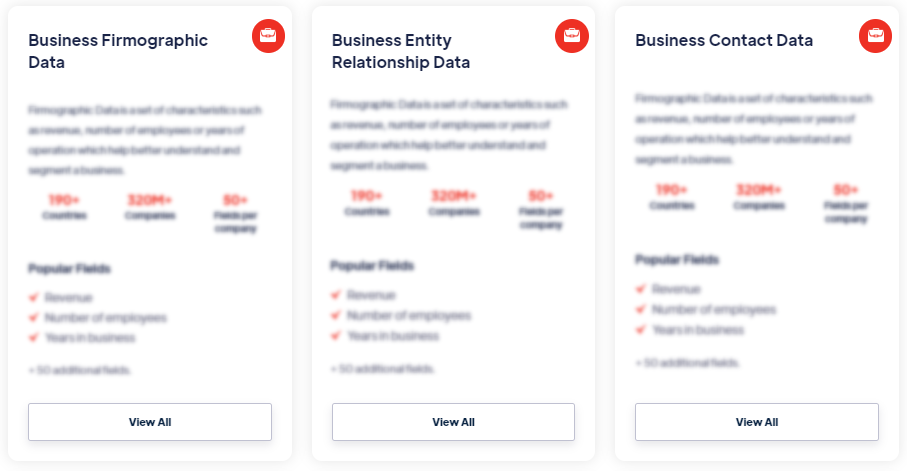Best
Demolition Data
Products
Demolition data refers to information related to the process of dismantling or destroying structures, buildings, or infrastructure. It includes data points such as the location of the demolition site, the type and size of the structure being demolished, the demolition methods used, and the timeline of the demolition project. Demolition data provides insights into the removal and disposal of existing structures to make way for new construction or redevelopment. Read more
Our Data Integrations


Request Data Sample for
Demolition Data

Browse the Data Marketplace

Frequently Asked Questions
1. What is Demolition Data?
Demolition
data refers to information related to the process of dismantling
or destroying structures, buildings, or infrastructure. It
includes data points such as the location of the demolition
site, the type and size of the structure being demolished, the
demolition methods used, and the timeline of the demolition
project. Demolition data provides insights into the removal and
disposal of existing structures to make way for new construction
or redevelopment.
2. What sources are commonly used to collect Demolition
Data?
Common sources for collecting Demolition Data include building
permits and records from local government authorities or
municipalities responsible for overseeing construction
activities. Demolition contractors and construction companies
may also maintain their own records and documentation of
demolition projects. Additionally, satellite imagery, aerial
surveys, and remote sensing technologies can provide visual data
to monitor and assess demolition activities.
3. What are the key challenges in maintaining the quality and
accuracy of Demolition Data?
Maintaining the quality and accuracy of Demolition Data can be
challenging due to several factors. One challenge is ensuring
complete and timely reporting of demolition activities, as some
demolitions may not require permits or may go unreported.
Another challenge is the consistency and standardization of data
collection methods across different jurisdictions or
organizations. Additionally, data validation and verification
are important to ensure the reliability and accuracy of the
reported demolition information.
4. What privacy and compliance considerations should be taken
into account when handling Demolition Data?
When handling Demolition Data, privacy and compliance
considerations may include protecting sensitive information
related to property owners, ensuring compliance with local
regulations and permits, and adhering to data protection laws.
Personal identifiable information (PII) should be handled
securely and anonymized when necessary to protect the privacy of
individuals involved in the demolition process.
5. What technologies or tools are available for analyzing and
extracting insights from Demolition Data?
Various technologies and tools can be used to analyze and
extract insights from Demolition Data. Geographic Information
Systems (GIS) software allows for spatial analysis,
visualization, and mapping of demolition activities. Data
visualization tools help in presenting trends and patterns in
demolition data. Statistical analysis software aids in analyzing
quantitative aspects of demolition projects, such as project
duration or cost. Remote sensing technologies, including aerial
imagery and LiDAR, can provide detailed information about the
physical changes and impact of demolition activities.
6. What are the use cases for Demolition Data?
Demolition Data is used in several contexts and applications.
Urban planning and redevelopment initiatives rely on demolition
data to assess the feasibility of new construction projects,
identify areas for revitalization, and plan infrastructure
improvements. Environmental impact assessments may use
demolition data to evaluate the potential effects on air
quality, noise pollution, and waste management. Real estate
developers and investors can analyze demolition data to identify
opportunities for property acquisition and redevelopment.
Additionally, research and policy organizations may use
demolition data to study trends, patterns, and the economic
impact of demolition activities.
7. What other datasets are similar to Demolition Data?
Datasets similar to Demolition Data include construction
permits data, building inspection data, and construction project
data. Construction permits data provides information about
various construction activities, including demolition permits.
Building inspection data offers insights into the condition and
safety of existing structures. Construction project data
includes information on ongoing or completed construction
projects, which may involve demolition as part of the process.
These datasets, when combined with Demolition Data, provide a
comprehensive understanding of construction and demolition
activities within a specific area or region.
